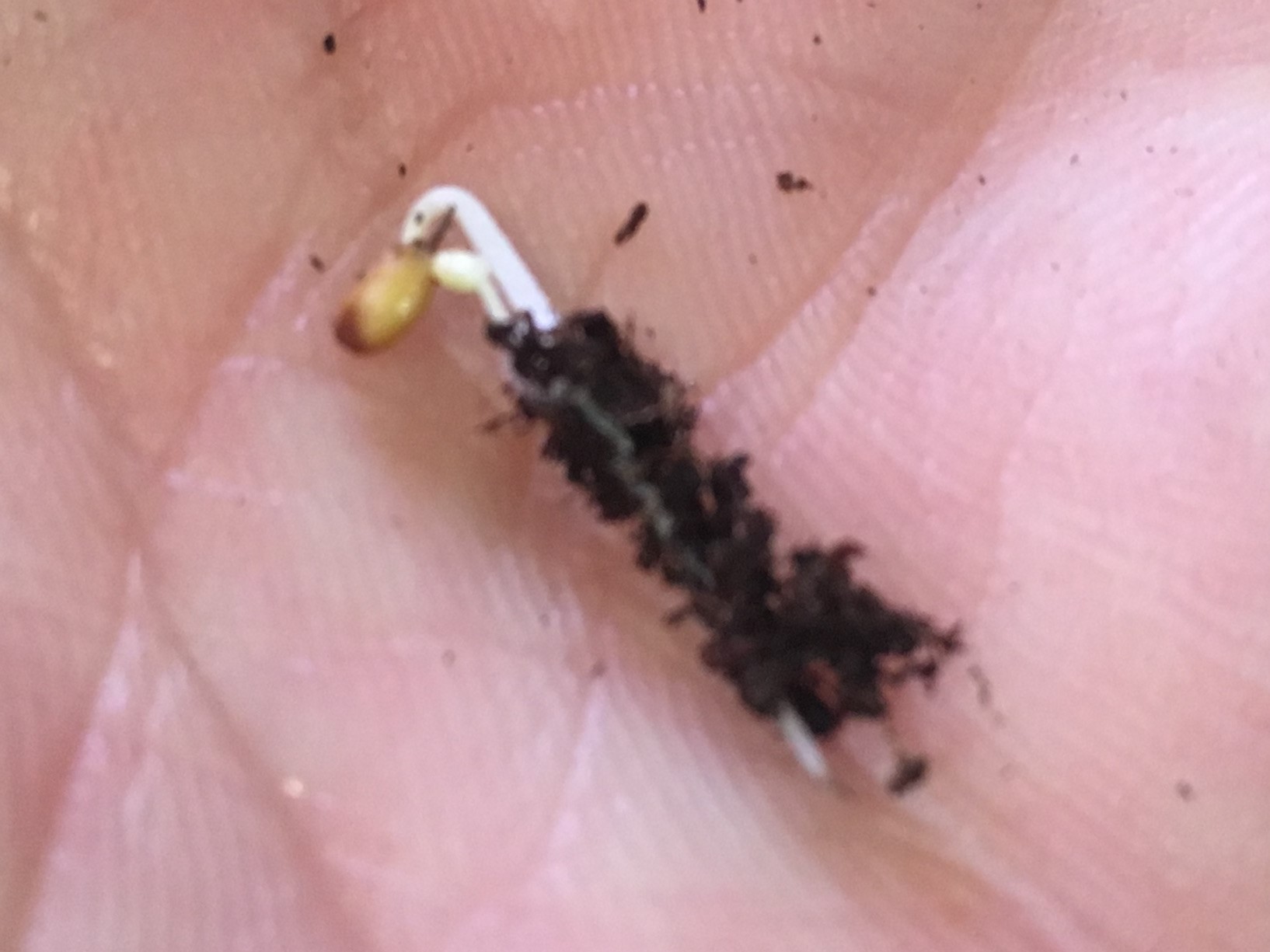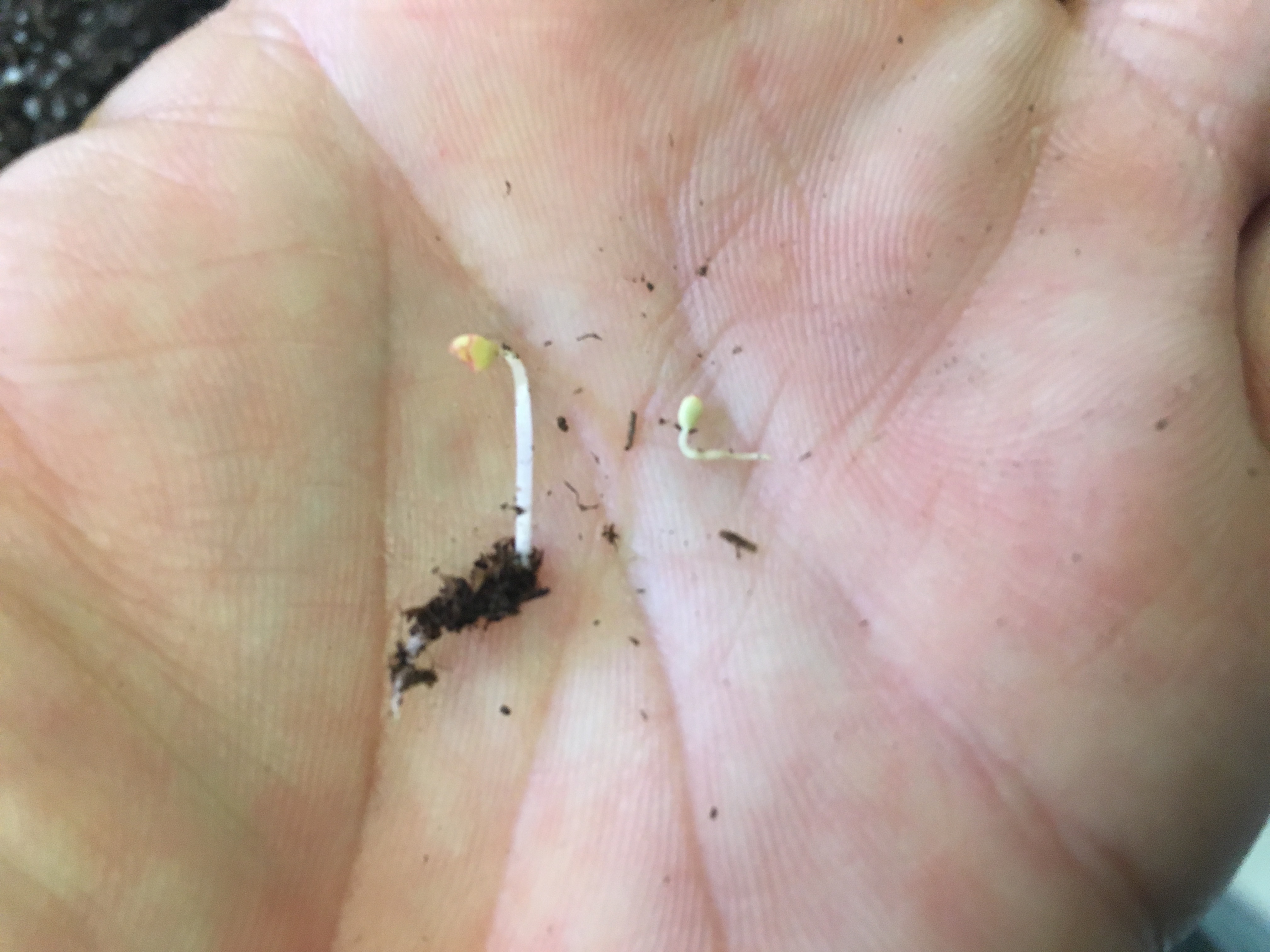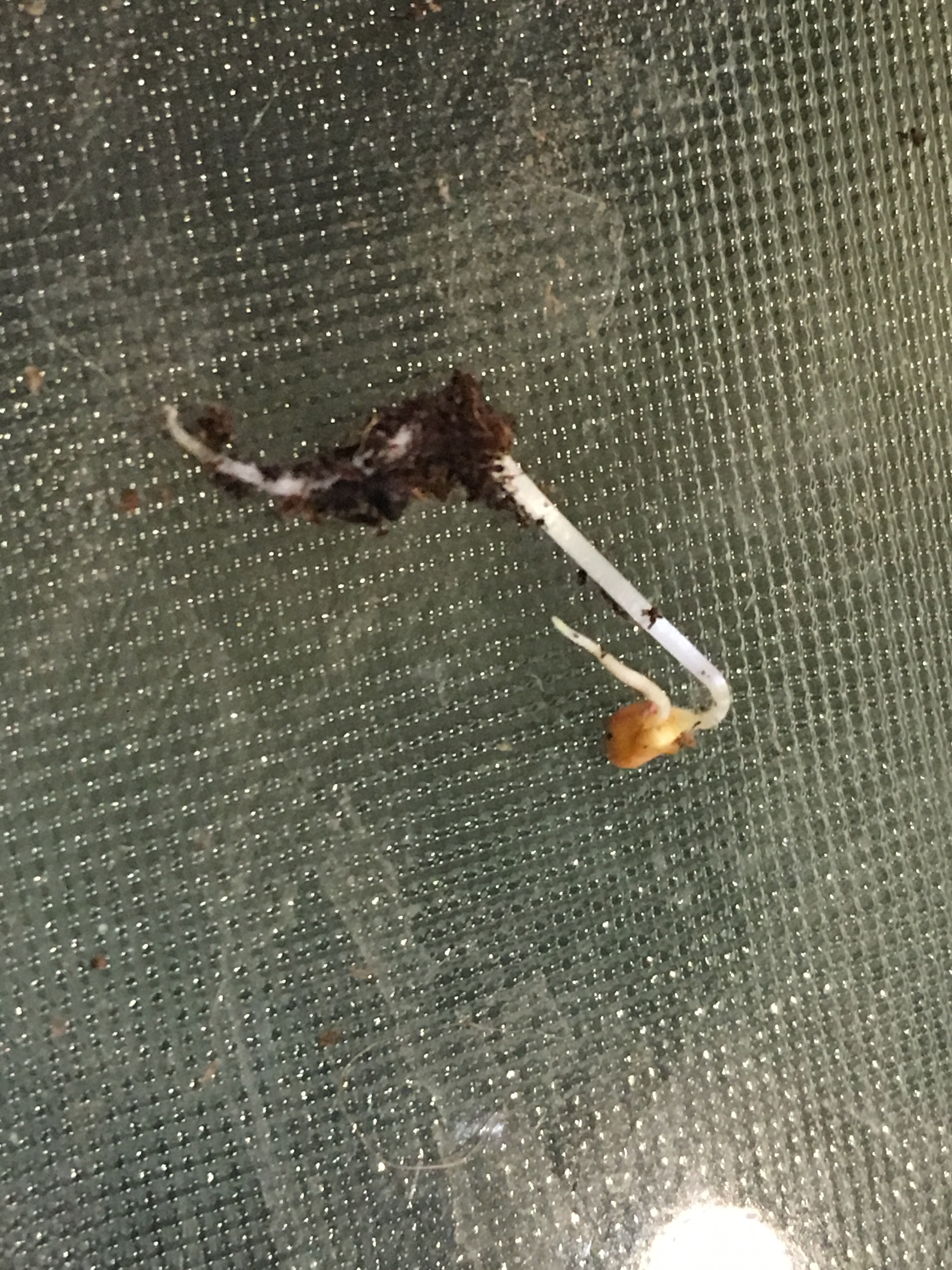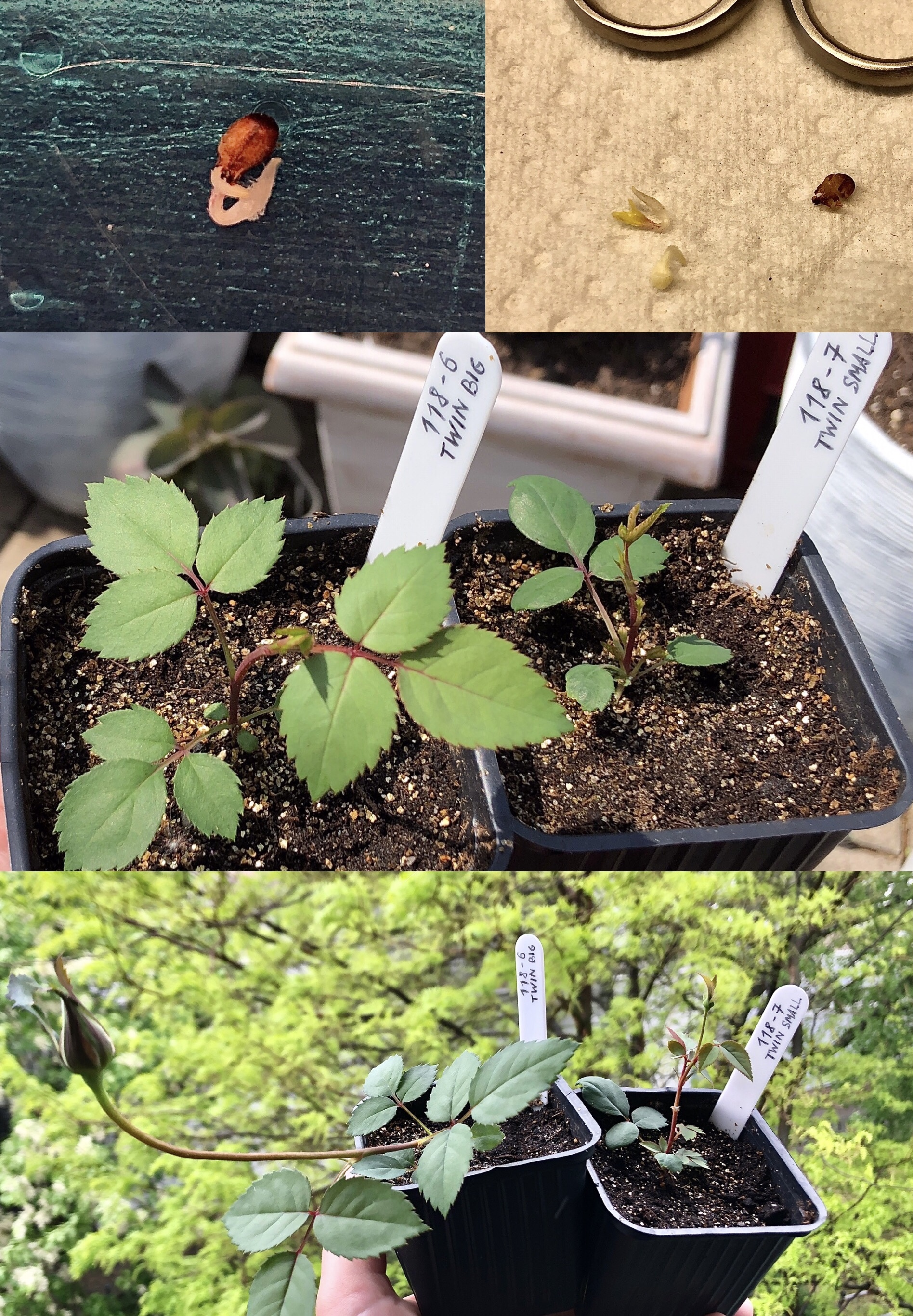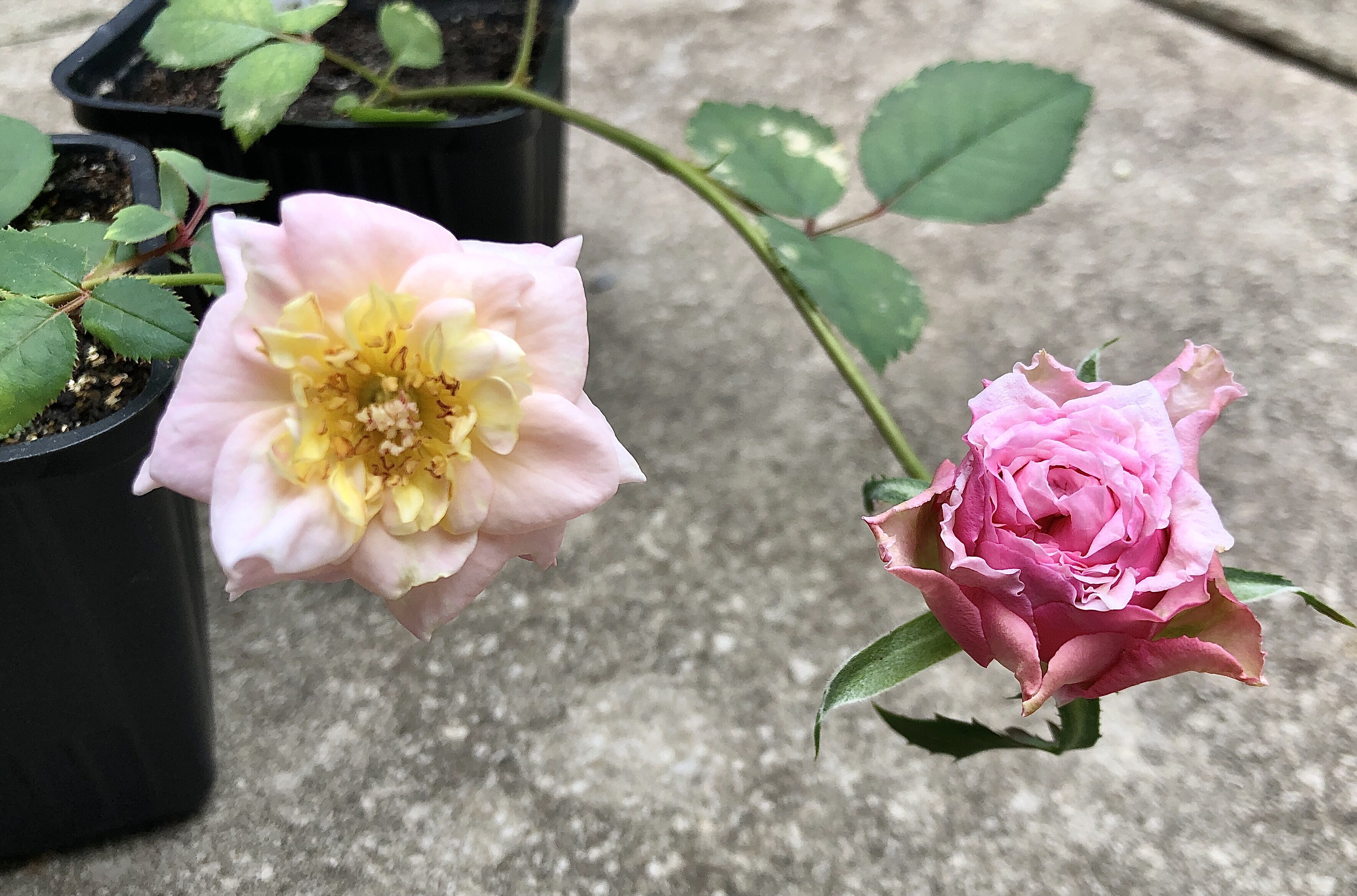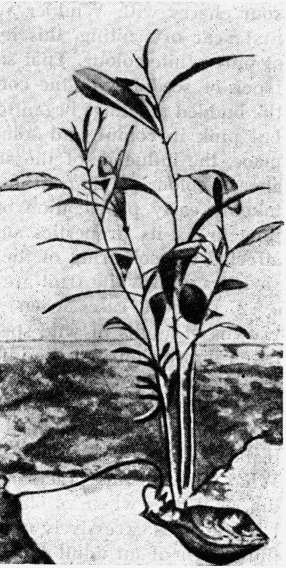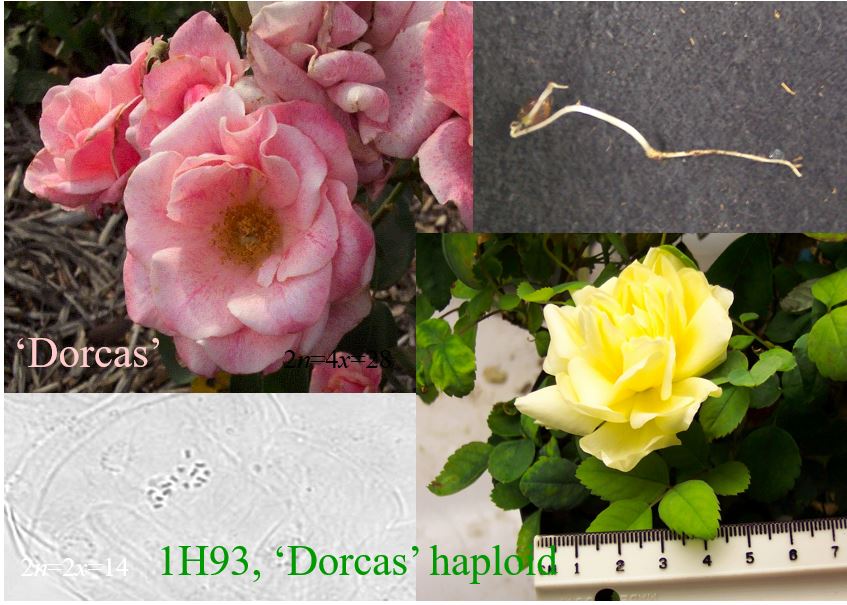I have produced a research document on this subject, see attached. (Sorry the photographs failed to send) I could send the complete document by email if required, sorry I am not very tech savvy.
TWINS
(a growing history)
(Polyembryony)
GARY WOOTTON
Nepean Blue Mountains Hawkesbury Regional Rose Society, Australia
Abstract
The purpose of this research was to follow the growth history, from an embryonic seed state to a fully developed flowering state. To aim was to watch each twin survive and proceed to maturity and eventually to flowering. The author has no formal horticultural qualifications and the language used throughout this document is targeted to a rose hybridizer.
DEFINITIONS:
The definitions that were created and used throughout this document are as follows:
Term Meaning
SENIOR The first seedling to germinate.
JUVENILE The seedling that germinated subsequently to the senior seedling.
POLYEMBRYONY Polyembryony is the phenomenon of two or more embryos developing from a single fertilized egg. Polyembryony occurs regularly in many species of plants.
SIBLINGS Twins share their DNA. The term is used to describe both seedlings growing together.
TWINS Twins are two offspring produced by the same hybridization.
HISTORY:
During a hybridization of Rosa ‘Joyce Abounding’ and Rosa ‘The Golden Child’, four sets of twins were produced. The first of the twins appeared on or about the 30 April 2018, the second of the twins appeared on or about the 28 May 2018, which equates to approximately twenty-eight days or four weeks, the third of the twins appeared on or about the 15 Jun 2018, and the fourth of the twins appeared on or about the 05 Jul 2018.
The above phenomenon is referred to as Polyembryony and pronounced as (poll·e·em·bree·on·nee) and is also defined, in part, as a phenomenon of two or more embryos developing from a single fertilized ovule. Polyembryony occurs regularly in many plants and animals. The Nine Banded Armadillo, for instance, usually gives birth to four identical young. The term is used in botany to describe the phenomenon of two seedlings emerging from one seed.
Polyembryony was first described by Antonie van Leeuwenhoek in 1719 when the seed in Citrus was observed to have two germinating embryos. As with other species, due to the many embryos developing in close proximity, competition occurs, which can cause variation in seed success.
I found it interesting that in several species, polyembryony has been linked to genetic causes and appears to result from hybridization (Maheshwari and Sachar, 1963).
All twins were treated the same way as all other seedlings, the twins generally tended to lag behind all other seedlings which germinated at about the same time. The twins fell behind in growth, which would be expected as two siblings are surviving on the same available nutrients in the seed.
PARENTAGE:
There are some roses that seem to give twins more often than others and some of those that produce this phenomenon more than others are Rosa ‘Rise 'N’ Shine’, Rosa ‘Dorcas’, Rosa ‘High Voltage’. It should be noted that Rosa ‘Rise ‘N’ Shine’ has Rosa ‘Little Darling’ in its Parentage Tree, as both the seed and the pollen provider at different stages, and this could just be a coincidence, Rosa ‘Rise 'N’ Shine’ is part of the pedigree of Rosa ‘Joyce Abounding’.
PERCENTAGE:
In total nineteen seedlings from this cross germinated, four of which produced twins, this equates to approximately, 21%, of all seeds to germinate, which is reasonably high percentage one would think.
CHRONICLES:
The twins growth cycle has been chronicled by photographs each mid-month (on or about the 16th of each month), on a monthly basis.
PROGRESSION:
The researched documentation on this subject indicated that both stems are likely to develop at the same rate, but this was not the case with my rose twins. One of the siblings would advance more than the other as they progressed, although this was more prominent in the more senior twin. When we have twins coming from a common testa or seed coat, one twin is normally much smaller than the other, and may need to be nursed along. Both the junior and senior siblings progressed normally, alongside other rose seedlings, whilst the third twin failed and it has appeared to have strangled itself, with the two stems twisting in on them. At that stage, approximately six weeks past germination, it had only advanced slightly past the leaf opening stage. The fourth twin simply failed to advance past the germination stage and had two distinct sets of cotyledons or seed leaves. It had only advanced to the leaf opening stage into its fifth week past germination.
The two remain siblings were potted up approx. eighty days after germination. The senior sibling slightly more advanced and the junior sibling slightly less so. Both sets of siblings had a good root system, and each set of siblings also had five, or better, true compound rose leaves.
The senior set of siblings started to show signs of yellowing and minimal dieback on some leaves and in the main looked in a feeble condition after a period of seven days after being potted up.
The junior set of siblings, also started to show signs of some yellowing of some leaves but in the main looked to be healthy and was showing signs of new growth on both siblings over the same period of fourteen days, after being potted up.
The senior set of siblings has started to show signs of the second stem failing and is not showing any signs of growth after another period of seven days after being potted up. The juvenile set of siblings has started to show signs of the second stem failing and is not showing any signs of growth after another period of twenty-one days after being potted up.
Both sets of the remaining twins are now growing strongly and it would be expected that both will move on to their next growing stage of flowering. The juvenile twin was more advanced than the senior twin at the flowering stage, I believe this to be due to the fact that at the time each stem failed, one stem of the juvenile twin was growing more dominantly then its sibling. The stems of the senior siblings were consistent in their growth, throughout all stages of their growing cycle, therefore sharing all nutrients and nourishments, as depicted in the photographs below:
The twins have failed on both seedlings, the sibling to fail was the second, and the underperforming stem on both. It is interesting to note that both twins failed within 28 days of each other, after germination. As an example Twin A, which germinated on 30 April 2018, failed on the 13 August 2018, whilst Twin B, which germinated on 28 May 2018, failed on the 10 September 2018. They germinated 28 days apart and subsequently, failed 28 days apart. It is as if they have a life expectancy of 105 days. (The dates are an approximation, as I could not say for sure when each stem had failed, they are based on a comparison of the appearance of each stem). Both the remaining seedling are growing well and proceeding to the flowering stage of their growth cycle. As shown below in the Siblings Timeline:
Siblings Timeline
Relevant Dates
Siblings Hybridized Planted Germination Potted Up Failed
Senior Sibling 25 Oct 17 11 Apr 18 30 April 18 18 Aug 18 13 Aug 18
Junior Sibling 25 Oct 17 11 Apr 18 28 May 18 18 Aug 18 10 Sep 18
Third Sibling 25 Oct 17 11 Apr 18 26 Jun 18 08 Aug 18
Forth Sibling 25 Oct 17 11 Apr 18 04 Jul 18 18 Jul 18
FERTILIZING:
The fertilizing regime for all seedlings was half strength Neutrog “Sudden Impact for Roses” liquid fertilizer, applied twice a week. It was thought unwise to either increase the strength or application timing for the twins.
FLOWERING:
The seedlings shown below are shown in their order of appearance and not in the order of seniority.
The juvenile seedling is growing well and has advanced on to the next growing stage of flowering. The juvenile seedling flowered forty four days after its sibling had failed.
The juvenile seedling has been the more advanced of the twins, as detailed earlier, than the senior seedling throughout the whole growing cycle, therefore the junior seedling was the first to produce a flower. It would not be expected, nor would it be logical to expect, that both seedlings would produce the same flower as at this stage they are both different roses, on their own root system. The senior seedling is growing at a consistent rate and has advanced on to the next growing stage of flowering. The senior seedling flowered seventy four days after its sibling had failed. The senior seedling has been the more underdeveloped of the seedlings, as detailed earlier, and the junior seedling was the better performer throughout the whole growing cycle. This seedling appears to be lacking the qualities to advance past the benchmark required to avoid being rejected. The senior seedling was the second to produce a flower.
CONCLUSION:
Within the genus Rosa there are over three hundred species and thousands of cultivars, yet there is only a selected few species or cultivars that are known to produce this phenomenon. Some Rosa species or cultivars hybridize and produce the twins or Polyembryony more easily than others. The production of twins is due to the characteristics of one or both of the parent’s recessive genes and will not only give us what we are looking for, but can also give us what we are not looking for. A degree of providence is also involved, (good or bad, whichever way you look at it). At the end of the day once one of the siblings fail, the remaining seedling is just another seedling to advance or fail on its own merits.
